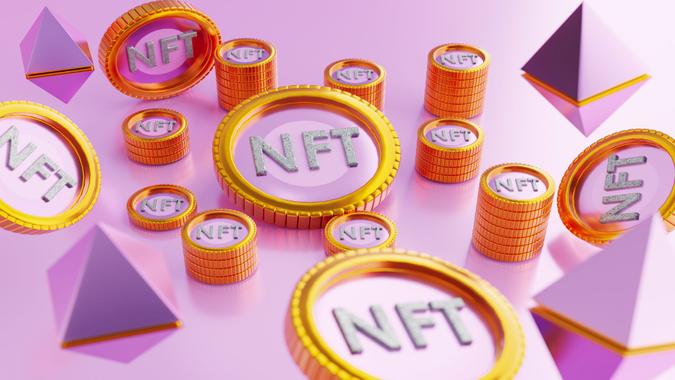How NFTs create value in the metaverse

If you’re reading this, you probably know that investors can buy NFTs in the hope that they will rise in value and then sell them for a profit. You probably also know that artists and other creators use them to validate the authenticity and ownership of their work.
Here it is: Our spotlight for small businesses in 2022
Learn: 7 Things You Should Never Do When Planning for Retirement
But NFTs are also the foundation of the metaverse, and this is where the most exciting opportunities to make money appear. The metaverse itself is still just emerging, so it’s not too late to get in on the ground floor as an NFT-based landowner, landlord, lender, developer, developer or developer. Let’s explore the value of doing so.
NFTs like Digital Land Deeds in the Metaverse
Mark Twain once said, “Buy land. They can’t make it anymore.” Twain could not have predicted the metaverse, but his wisdom still holds.
Just as in the physical world, land ownership denotes wealth in the digital realm. For example, parcels of property in The Sandbox metaverse are called LANDs.
When you buy one, you don’t get a deed, you receive an NFT that records your ownership of that little piece of the digital world. According to Medium, each COUNTRY is an NFT on the Ethereum blockchain that represents a 96×96 meter parcel on The Sandbox map.
Just like in Twain’s stuff, metaverse land is limited. The map that makes up The Sandbox metaverse will never contain more than 166,464 LANDS.
There are 166,464 NFTs, each representing exclusive ownership of the metaverse’s equivalent of a parcel of real estate.
Take our poll: do you tip for service?
Why own land if not to develop it?
LAND are the building blocks of The Sandbox metaverse. If you acquire enough LANDS, you can combine them into properties, each complete with a variety of potentially income-generating assets.
Whether you own individual LANDS or entire properties, you can build on them with User Generated Content (UGC). This includes unit resources such as trees, bridges or animals, and equipment assets such as weapons, equipment or other accessories that avatars can carry or carry.
Just as with land, NFT denotes ownership of assets. To buy or sell them, you buy or sell their corresponding NFTs. Once you own a piece of the metaverse filled with assets, you can monetize your holdings by charging people to visit your COUNTRY, take part in your facilities or events, or play games you host.
You can also make money by selling your LAND at a markup after you develop and customize it, kind of like the metaverse version of flipping property.
Of course, that’s just an overview of life as an NFT king in The Sandbox, which is just one of several metaverse platforms. Each has its own land entities, assets and regulations, but they all have one thing in common – NFTs are the foundation of the metaverse economy.
Earn passive income by renting out your NFTs to players in need
Play to Earn (P2E) players create or modify the assets in the metaverse to earn valuable NFTs as rewards. That’s why these assets are known as user-generated content. The problem is that in order to start making money, P2E players must pay large sums of money upfront – sometimes thousands of dollars – to purchase the NFTs needed to meet the game’s minimum asset requirements.
Many of them simply do not have the money to get started.
If you’ve established yourself as a land-owning player in the metaverse, you can rent your NFTs to the eager but underfunded players to buy into the game. In exchange, you get a cut of their future earnings – and you never relinquish ownership of your NFTs.
Axie Infinity players in the Philippines started the NFT rental trend when the game launched in 2021. In the metaverse, these rentals are called “grants”, and “grants” can build and improve assets on land you own – thereby increasing your metaverse property value – while they pay you a percentage of their income for rent.
New ways to make NFT pay in the metaverse
According to CoinDesk, some exciting NFT trends are gaining traction in the metaverse, including:
- Return generating NFTs: Create passive income by issuing NFTs as governance tokens, which give holders voting rights in the development of blockchain projects.
- Residual dividend: NFT owners can earn royalties on their holdings. For example, an NFT representing a digital racetrack in the metaverse could give its owner a percentage of each race that takes place on it.
- Social events and private parties: Rapper and NFT diehard Snoop Dogg sold NFTs as passes to a private party he hosted in The Sandbox metaverse. Only 650 of the 1,000 NFTs he issued were made available on The Sandbox Marketplace, and one of them had a secret prize. Snoop himself would perform on the LAND of the person with the winning NFT, who could then, presumably, monetize Snoop’s performance on their own digital property.
More from GOBankingRates



